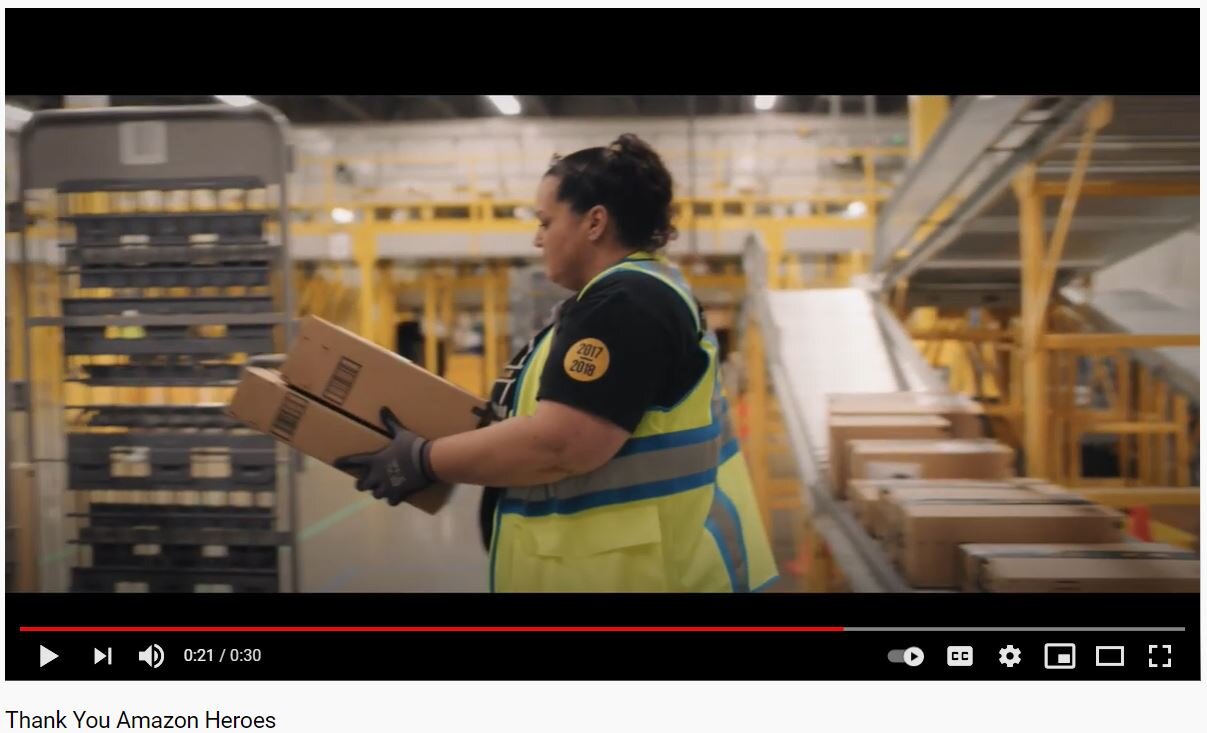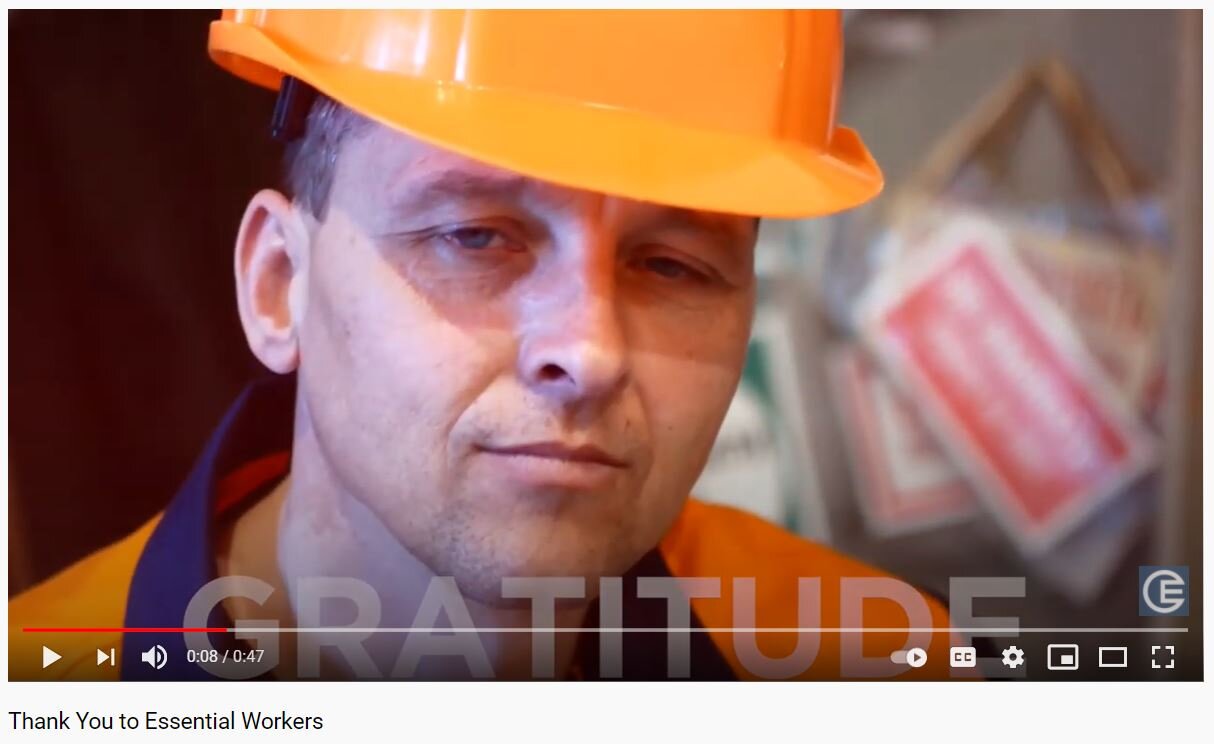Empathy Is Evergreen
The most predictable thing about the world is that it’s going to surprise you.
Sometimes, the weather report says you’ll have clear skies and mild surf, and you end up sandwiched between sixty-foot-tall waves in the middle of a lethal typhoon.
Other times, you’ll suddenly find yourself living through a global pandemic. We’ve all been weathering this storm for the better part of a year, now.
Our founder and Executive Creative Director, Tom Geary, spoke with Jarie Bolander of the Entrepreneur Ethos podcast several months ago. They covered surviving that typhoon (true story), but the meat of their discussion was on how major brands have tried to connect with audiences throughout the pandemic.
This interview is even more relevant than it was at the beginning of the pandemic, because despite all the time they’ve had to adapt, brands haven’t done a very good job of it. But that’s to be expected.
Whether you’re a scrappy startup or a monolithic mover-and-shaker, right now, you’re in a tricky position when it comes to advertising. Moving forward without acknowledging that we’re in a global pandemic feels brazen and thoughtless, and bringing it up in a cold email or an ad campaign can easily come across as a cynical attempt to capitalize on the moment.
The result is a landscape of identical messaging. Every brand is copying off of each other’s homework as they rush to play it as safe as possible. We’ve all seen an ad, or fifty, “thanking our essential workers,” but can you remember who was behind the last one you saw? The last five?





“There have been mashups done where people have cut commercial number one into commercial number two with the typical Covid thing, with the piano music playing, because everyone is following the exact same playbook. So it doesn’t do you any good to play that tune once more.”
When every brand’s ads look the same, none of them are doing their jobs. If anything, these ads actively make those essential workers feel spiteful towards their employers. Spending advertising dollars on a glorified thank you card, instead of putting that money into hazard pay or safer working conditions, really doesn’t go over well.
So if playing it safe is a waste of money, but taking risks in the middle of a pandemic is stepping into a potential minefield, what can you do?
“A lot of companies think ‘my customers don’t like to be marketed to.’ Nobody likes to be marketed to. But if you can provide an experience that’s rewarding or interesting, that meets a need, it’s going to be appreciated. Everyone will benefit from it.”
The key, Geary says, is to empathize with the end consumer. The best messages, the ones that customers actually remember fondly? They all have an element of connection and relatability that working from a typical marketing playbook will never get you.
Showing even a little kindness and generosity is shockingly effective in advertising, because it creates a genuinely positive memory connected directly to your brand. But, of course, how you do that matters too. If you’re offering your audience something, it had better be something they actually want.
“The problem is, a lot of brands have this empty, hollow, ‘we’re with you! Here’s three percent off your car rental.’ I don’t need three percent off my car rental,” quips Geary, “I need a babysitter to come over, and a bottle of wine.
“And that’s not [this car rental brand’s] place, but what could they do to be selfless and to surprise and delight people unexpectedly? Just show a little humanity that is genuine, and selfless, and do it for the right reasons, and the benefits will spread exponentially.”
Some companies are already reaping those benefits. Reddit’s “thank you to all the knuckleheads” ad was a hit. It leaned on a montage of funny coping mechanisms we’ve developed in the pandemic, as well as a nod to the healthcare workers on the front lines.
“It was the right balance, where it was like ninety percent about making people feel better, rather than going to the same predictable chord.”
Another unexpected winner? Frito-Lay. Their messaging talked about how they were bucking the trend, avoiding cutesy pandemic info-ads like the letters in the Coca-Cola logo socially distancing themselves.
“And they’re exactly right,” Geary notes. “Coke having a message about physical distancing, I’m pretty sure we’ve all got the physical distancing thing down at this point.”
“Coca-Cola is in a position,” Geary argues, “especially with a product that sells in good times and the bad, to help a lot of people. There are lots of things that they could do to surprise and delight.”
One easy example would be how Frito-Lay donated a trailer full of their snacks to medical professionals and first responders. Their direct response to the “socially distanced logo” strategy is even more insightful.
In a TV spot titled “It’s About The People,” they make a point of saying that they aren’t going to make empty gestures on the Times Square Jumbotron or wherever — instead, they talked about how they’re hiring three thousand people full-time and donating money to relevant causes.
As Geary says, “There was substance to it. Surprise and delight with substance.”
And yeah, taking these tactics was a risk, compared to following the classic marketing playbook and blending in with the sea of safe, but bland ads. Still, acts of kindness are pretty hard to screw up, while blending in is a zero-sum game.
Even if your brand is all about stability and consistency, you’re gonna miss one hundred percent of the shots you don’t take, so planning to take some risks with your messaging is absolutely essential. Case in point? Microsoft.
“Microsoft is a very conservative company, culturally, I think, with their communications. But they invest about three percent every year on these things called ‘emerging media trials.’ Anything would go. It was like a VC fund for communications and marketing ideas.”
Despite its status as a corporate titan, Microsoft’s strategy treats these ideas like small startup companies. Some will fail, but they’ll fail quickly, and move on to the next thing. As for the ones that work? Geary can tell you about some spectacular success stories.
“I spearheaded a number of them, and some of them were crazily successful. We got fifty million views for free. And we had another thing where we had ten thousand playing a game in real time for three months.”
“If you can create an environment and opportunities like that, like a VC effort, some of those startup efforts are going to succeed, and they will become the basis of an amazing brand story.”
While we don’t all have Microsoft’s pocketbook to throw around, their methods can be scaled down and will still produce results. Experimentation is key, as is empathy for your audience.
“If you run everything through the filter of empathy, and again focus on the end consumer, it shouldn’t be about your offering, it shouldn’t be about your product, it shouldn’t be opportunistic. But that doesn’t mean you can’t accomplish something in this time,” Geary says.
“I mean, you can make a lot of people feel better, you can bring a smile to somebody’s face, you can distract them from what’s going on.”
To state the obvious, that’s as true now as it was at the start of the pandemic. People need relief, happiness, hope — and if you can give that to them while making an impression, everybody wins.
---
This conversation was featured as a podcast on The Entrepreneur Ethos blog (Episode: Make Them Care, with Tom Geary). If that piqued your interest, why not give the full episode a listen?
Jarie Bolander is an entrepreneur, engineer, and the author of six books. He’s also host of the Entrepreneur Ethos podcast, where he interviews business leaders to find out how they plan to build a more ethical, inclusive and resilient world. You can follow him on Twitter @thedailymba.
You can connect with Tom Geary on LinkedIn, and follow our creative agency @SchoolOThought.





